Foreign accounts are important to understand ancient Indian history. In Ancient times a number of travelers from Greek, Romans, Chines and Arabs visited India. these travelers left numerous accounts of the incident, they had observed. they composed some books and gave detailed descriptions of political events, wars, lifestyle of individuals of that time.
Some foreign travelers to ancient India
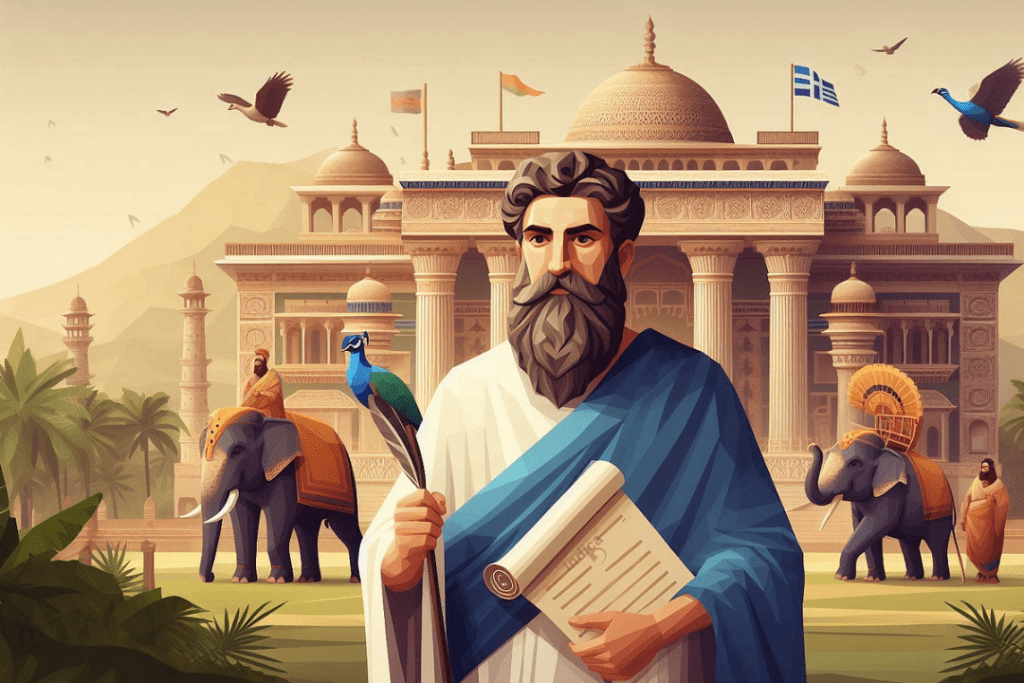
Image : Megasthenes
• Megasthenes, he was the ambassador of selyuka’s niketa who visited India during the supremacy of Chandra Gupta. He was sent on consulship to the Mauryan emperor Chandragupta by the Greek ruler Seleucus I. Megasthenes was the first person to describe ancient India and that is why he is called the “Father of Indian History”. he wrote book Indica which was lost in the currents of time. Indica is a very important source of ancient Indian history. India has importance in the reconstruction of ancient India under the Mauryan empire. it shows us the administration, diverse culture and philosophy of ancient Indian people.
Megasthenes visited India during the reign of Chandragupta Mauryan, yet it is uncertain when he came to India or how long he stayed in the country. People say that he passed through the Punjab region in north-western India, as he provides detailed descriptions of the rivers of the region. After this he probably went to Pataliputra along the Yamuna and Ganga waterways, yet it is not certain which parts of India he visited.
You can read this article for more information on INDICA
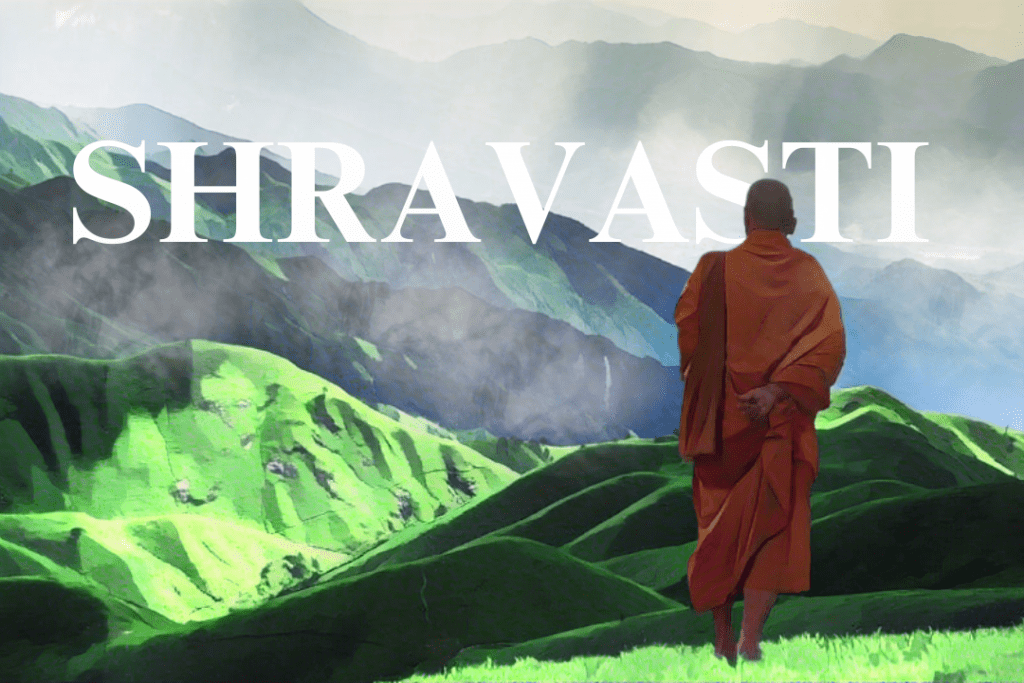
Image : Fa Hien
• Fa Hien, he was the first Chinese Buddhist monk who visited India during the reign of vikramaditya or Chandra Gupta second. his travel of named as raked of Buddhist kingdom. He traveled on foot from China to India and returned by sea.He traveled to many urban communities related to the existence of Buddha – Shravasti, Sarnath, Bodhgaya, Vaishali, Rajgir etc. He wrote about Taxila, Pataliputra, Mathura and Kannauj in central India and he lived in Pataliputra for about three years, learning and writing Sanskrit. Modesty rules.
Fa-Hien wrote about India in his book ”Fo-kwo-ki ” (Travels of Fa-hien) title record of the inner law sent home from the Southern sea. it includes his observation on customs of eating, drinking, daily routines, behavior towards strangers, relationship between teacher and people etc. Fa-hien also visited Malwa and praised its climate and he traveled across India for more than 13 years.
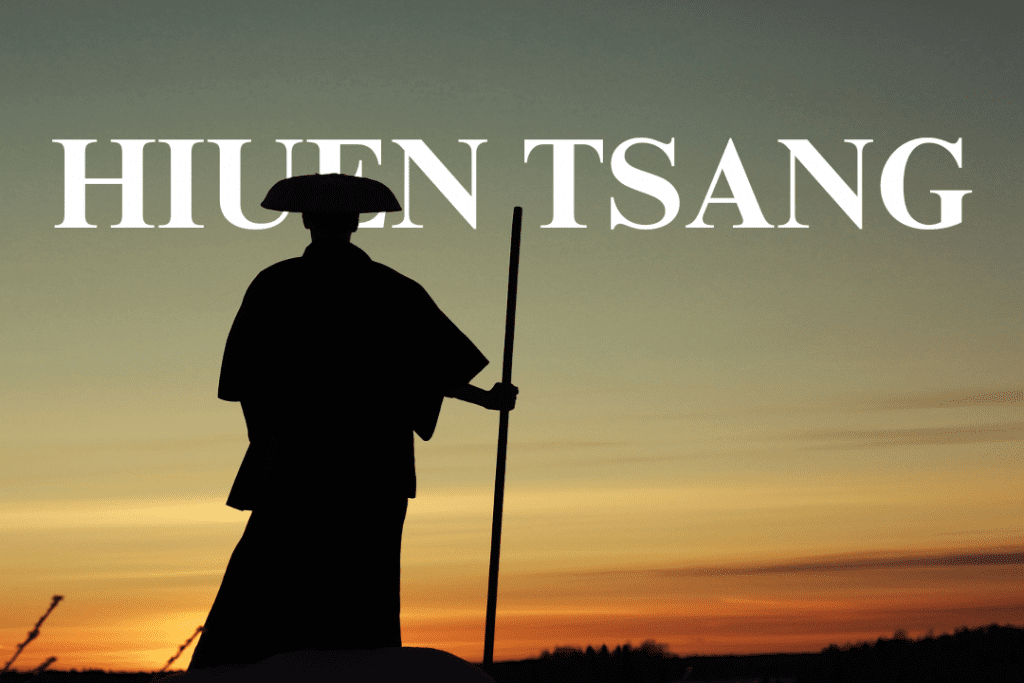
Image : Hiuen Tsang
•Hiuen Tsang, he was one of the first and most famous visitors to India, who came from China in search of Buddhist beliefs and practices. He visited India during the supremacy of harshavardhana in 630 A.D. Harshavardhan also invited Hiuen Tsang to the Kumbh Mela in Prayag. He wrote Siuki or the records of western countries. Hiuen Tsang’s great philosophical treatise, the Cheng Weshi Lun, is “the fruit of seven centuries of Indian Buddhist thought.” His stories reflect what ancient India must have been like as he lived there for 14 years.
In 637 AD, Hiuen Tsang started his journey from Lumbini and proceeded towards Kushinagar, Sarnath, Varanasi, Vaishali, Patiputra and Bodhgaya. He spent about five years in Nalanda and focused on logic, language structure, Sanskrit and the Yogachara school of Buddhism. While studying at Nalanda University he traveled to Deccan, Orissa and Bengal. He discovered commentaries on Vasubandhu while he was studying Buddhism in India at Nalanda University.
From Nalanda, Hiuen Tsang traveled towards Bangladesh and discovered 20 monasteries where more than 3,000 monks were studying both Hinayana and Mahayana then he traveled to Andhra Pradesh and visited the monasteries of Amaravati and Nagarjunakonda. Before returning to Nalanda he traveled to Nasik, Ajanta, Malwa, Multan and Parvati. He also traveled through the Khyber Pass, Hindu Kush, Kashgar, Khotan and Dunhuang, returning to China after 16 years.
Discover the Mysteries of Ancient Indian History through Archaeological Sources
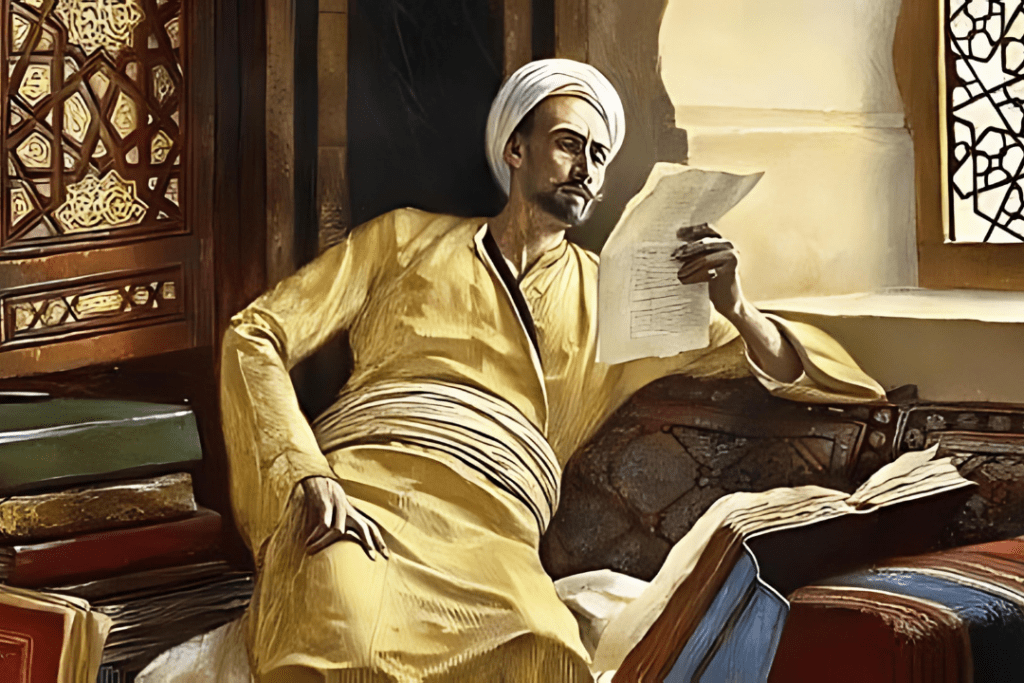
Image : Al Masudi
•Al Masudi, he was the first Arab writer. he was a famous geographer who came to India from Baghdad around 915-16 AD. Al Masudi contributed to cosmology, meteorology, oceanography, study of land forms, astronomy, Islamic law, and Arabic folklore. He traveled to the Indus Valley and other parts of India. Al Masudi, traveling further south, landed in Malabar on the west coast of India. He also visited Sri Lanka, Indonesia and Malacca in modern Malaysia.
he gives account of India in his book muruj al dhahab wa ma’adin al jawhar. As per his accounts, He mentions that India extends over sea, lands, and on the sides of the mountains to Khurásán and Sind, as far as Tibet. he also said that the Hindus differ from all other black peoples in intelligence, governance, philosophy, strength of constitution and purity of complexion. He called the river Ganga as ‘Jinjis’ and gave an interesting description of the Ganga. He wrote about the conflict between rulers of Rashtrakutas and Pratiharas. As per his account, women in the Rashtrakuta kingdom didn’t believe in the Purdah system.
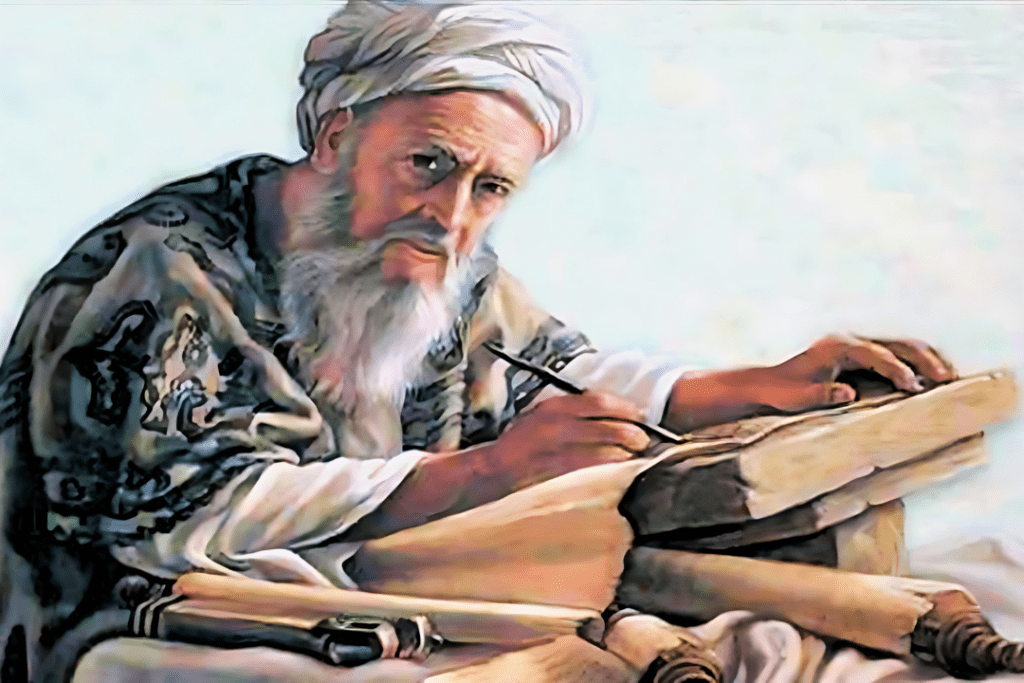
Image : Al Beruni or Abu Rehman Mahamud
• Al Beruni or Abu Rehman Mahamud, he was a persion scholar. Alberuni came to India in 1025 CE during Mahmud Ghazni’s attack over Somnath temple. He presented his accounts in the book Kitab-ul-hind or Tahqiq-i-Hind. he was the first Muslim scholar who came to study India. according to his accounts, Murder of a Brahmin was the greatest crime at that time. That the Patriarchal system was applicable in the Indian society. In which the son was considered the heir of the father’s property. Women had limited rights regarding succession. Indian society had no system of ”Talaq”. Only Anomalous marriage was allowed while the Pragmatic marriage was restricted.
As per his accounts, several evil practices like child marriage, prohibition of widow marriage, ‘Sati’ etc was existed in the Hindu society. According to him, Indians were narrow minded towards the foreigners. Indians used to call foreigners as ‘Malechha’. even if a person from outside was ready to accept their religion, Indians did not include him in their society. This is what he says, “Hindus firmly admit that there is no religion like theirs, no country like theirs. There is no ruler like theirs and there is no science like theirs”. the ancestors of the Hindus were pot so narrow minded.
As per his accounts, Indians wrote the title of books in the end instead of the beginning. Probably this area was a part of some huge ocean which gradually came out of the ocean. He also wrote about India’s rivers, soil, drainage system, terrain and seasons. He considered that Indian astronomy principles were inspired from Greek astronomy. At that time Indians used weight and measurement units like Suvarna, Tola, Masa, Yava, Prastha, Aadhak, Drona etc.
He described the use of various chemicals by Indians to cure diseases. Indian scholars tend to take scientific facts and superstition together, making it difficult to differentiate between the two. There was a lack of political unity among the Indian kings. Indians did not fight together against foreign invaders. Rather, Indian kings were happy on such occasions when their opponents were weak and took it as an opportunity for themselves.
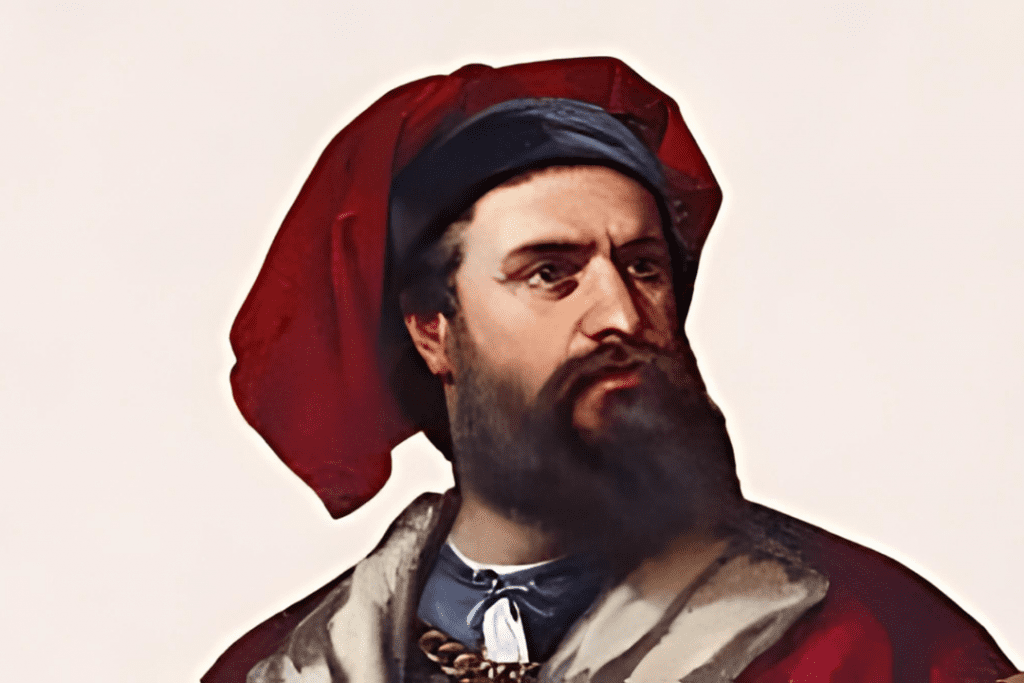
Image : Marco Polo
• Marco Polo, he was an Italian traveler who traveled from Europe to Asia from 1271 to 1295. The story of his journey is recorded in ‘The Travels of Marco Polo’. He reached the Coromandel Coast of India in 1292 AD. He visited India during the reign of the Pandya Empire and also visited southern India during the reign of Rudramadevi of the Kakatiya dynasty. After the eastern Coromandel Coast, Marco travels to the western Malabar Coast.
According to his description, the climate of India is so hot that men and women wear only loincloth. Both male and female deities were worshiped in temples and monasteries and dark skinned people were highly respected and they worshiped bulls and plastered their houses with cow dung. He also describes plantations of black pepper and indigo, incense and a drink made from date wine.
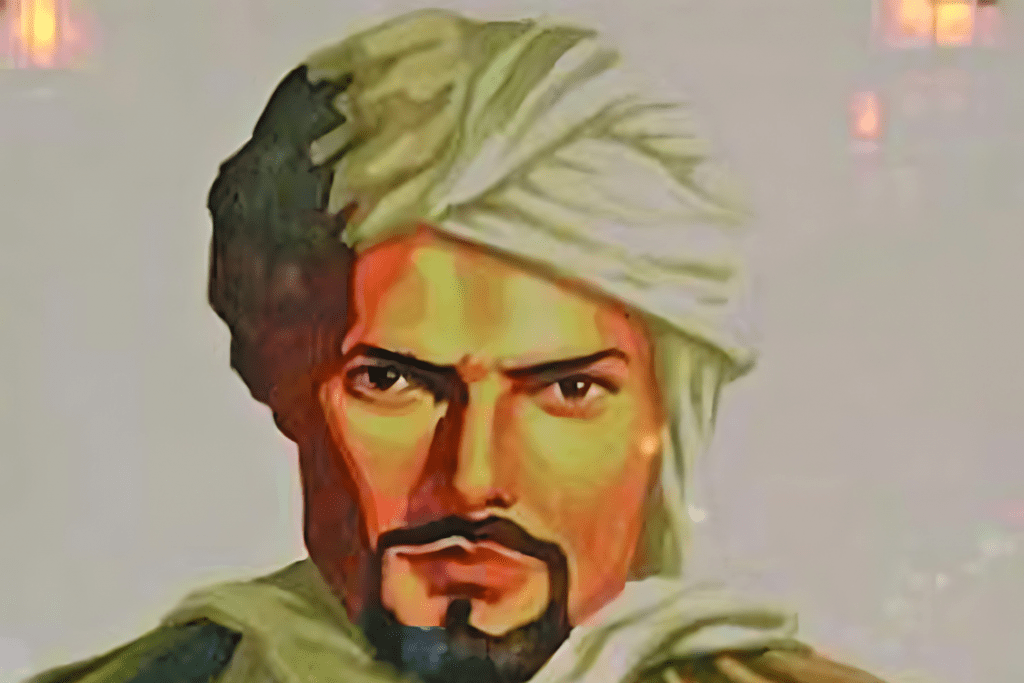
Image : Ibn Battuta
•Ibn-e-Batuta, he was a Moroccan traveler who reached India in 1334 CE during the reign of Mohammad Bin Tughlaq. He passed through the high mountains of Afghanistan and the Indus River and reached Delhi at a time when the Tughlaq dynasty was at its peak. he also mentions the Indian rhinoceros living on the banks of the Indus River.
When he reached the royal court of Mohammad bin Tughlaq he was given valuable gifts and in return Battuta was given a furnished house, where he lived for seven years. During his time in India he passed through many places like Abohar, Haryana, Uttar Pradesh, Daulatabad, Khambhat, Gwalior, Kerala etc. After India, he first set out to visit the Maldives Islands, where he stayed for 9 months and then decided to continue his journey to China.
He described his accounts in the Arabic book, Kitab-ul-Rehla. He gave an account of the issue of famine in Doab region, distribution of Taccavi loan, intelligence system and the postal courier system of that time. He also gave references to important monuments, scholars and Sufi saints of Delhi in his travel accounts. He also described the ship building at port cities of India during the Sultanate rule. According to him, cities were densely populated, bright and prosperous with colorful markets and streets. The market was a place of economic transactions and a center of social and cultural activities and housed various mosques and temples. He also describes the supply of the pan and betel nuts in the royal capital.








0 Comments